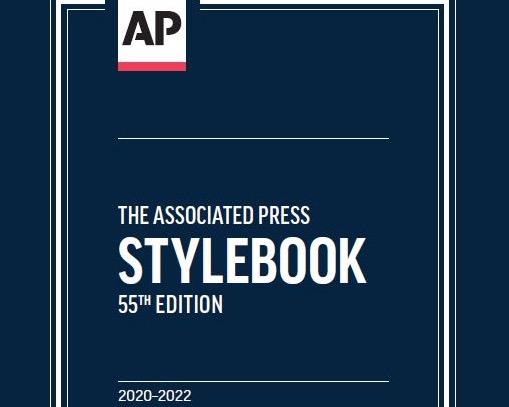Anyone who covers the news knows how fast circumstances, narratives and known facts can change. As the headlines shift, several times a day, The Associated Press works in the background to keep its stylebook, a key guidebook for journalists, moving along with them.
For journalists, including ours at PolitiFact, using the stylebook keeps our fact checks and stories neutral and, by ensuring consistency of language, can shield us against accusations of bias.
In November, the AP completed the second iteration of its four-week AP Stylebook Workshop, which it debuted this past spring. (The AP said it’s developing an on-demand workshop it hopes to launch in December and plans to offer in-person workshops again in 2024.)
The fall 2023 workshop, which ran in October and November, included live video presentations, dozens of short videos on nuts-and-bolts topics (hyphens, possessives and commas, for example) and how to apply the stylebook when there’s guidance and judgment when there isn’t.
There was also access to its study guides — multiple choice quizzes on many AP style topics, and perhaps the course’s most popular feature, a message board to discuss style questions with other classmates or AP Stylebook editor Paula Froke.
Froke and her co-instructors told the class the stylebook’s citations are guidelines that shift, as news, and language, do.
“The stylebook is a toolbook, not a rulebook,” Froke said in one session.
And the AP’s journalists and style committee keeps the book a mouse click or a page turn away, said Anna Jo Bratton, the AP’s deputy director for newsgathering.
“We check things all the time,” she said. “I look things up all the time.”
Here are some takeaways:
- Guidance is great, but sometimes we need judgment. “Some rules themselves require you to make a decision,” Andale Gross, the AP’s former race and ethnicity news editor, said in one video. “Is this a simple of complex phrase? Is this compound modifier recognized as a phrase on its own? You’ll need to decide.”
- Sometimes the AP uses the serial comma. Although the AP generally eliminates commas in series of items — Neapolitan ice cream includes vanilla, chocolate and strawberry — it will include them if not doing so would kill clarity. For example, “The strippers, JFK and Stalin” might suggest that the former historical figures are doubling as strippers. But adding the comma, “The strippers, JFK, and Stalin.” Confusion gone. (I’d just rewrite the sentence, but … )
- Newsrooms will often adjust the stylebook’s guidance for their audiences and not hear sirens. “We’re not going to take away your subscription if you if you do that,” AP product manager Colleen Newvine said. “There are no AP style police that will come knock on your door.”
MORE FROM POYNTER: Many newsrooms are now capitalizing the B in Black. Here are some of the people who made that happen
The AP Style Committee has focused on big-picture issues in the past five years, Froke said, updating or adding entries covering a variety of terms and concepts, such as artificial intelligence; gender-neutral language; disabilities; immigration; race-related coverage and criminal justice. Froke discussed the highlights of these updates, including uppercasing Black, unhyphenating dual heritages (e.g., Asian American) and preferring representative to congressperson.
Froke said discussion with the public guided the AP’s reasoning. Sometimes, there was no clear preference; some people preferred “people with disabilities” over “disabled people”; some liked the reverse. To know which term to use, she said, journalists should ask interviewees for their preferences.
“Don’t go telling us how to call ourselves,” Froke said she was told.
MORE FROM POYNTER: When reporting on disability, advice about language is simple: just ask
A large part of the final video session discussed an inclusive storytelling chapter the AP Stylebook added in 2022.
“(We did this) with the idea that the journalism and history narratives but dating back centuries, have myths have misrepresented or made to go missing a lot of people who are very much a part of our worlds,” Froke said, “and if we don’t accurately and adequately depict everyone in our world, we are not doing accurate journalism or any kind of reporting or storytelling.”
Although people may think of inclusive storytelling as race, gender or sexual orientation, there are other factors to consider — age, economic background, political leanings, disabilities. Reporters should ask themselves, “Are we seeking those voices?” Look at stories from a variety of lenses, she said, but do so wisely and for accuracy and clarity.
“If the story is about race, then it’s fine to identify somebody by their race,” Froke said, “but if it doesn’t contribute anything to the telling of the story, then there’s no need to reveal it. And also it runs the risk of reinforcing stereotypes or people making assumptions about a person because of their race.”
Froke said the style committee continues to consider its entries and take suggestions and queries, including one about whether email interviews should be adjustable for AP style as spoken interviews are. For now, emails are treated as all other printed materials are — they must be left unchanged.
Although many of these changes Froke described were months or years in the making, the AP this year showed its quick-strike capabilities. Within three weeks of the Oct. 7 Hamas attack, the AP unveiled a topical guide to the Israel-Hamas war, explaining historical context, key players and explanations for why “militants” is allowed (to describe Hamas) and “terrorists” is not.







